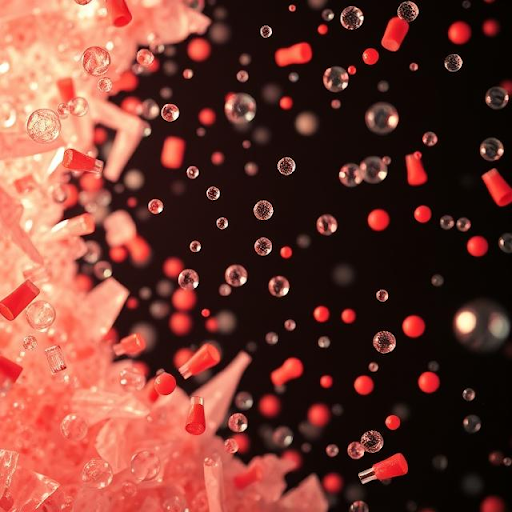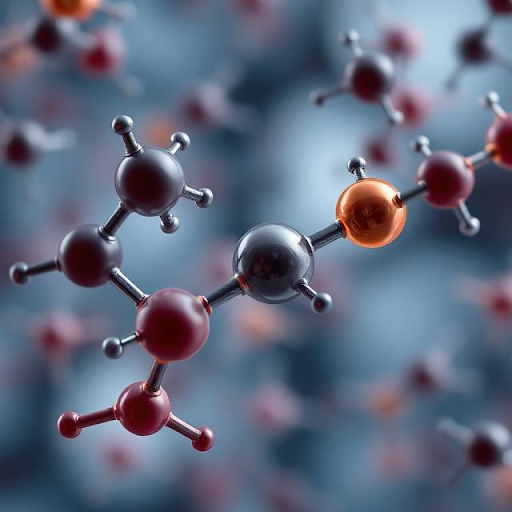Does BPA Reduce Testosterone? The Hormonal Link You Shouldn’t Ignore
BPA, or Bisphenol A, is a chemical that has raised concerns due to its potential impact on human health, especially regarding hormones. Many of us come into contact with BPA daily without even realizing it. Our goal at MicroplastX is to shed light on these hidden environmental factors and provide solutions for understanding their effects on your body.
When you're searching for answers about your health, particularly something as vital as hormone balance, you need clear, reliable information. That's precisely what we aim to provide, focusing on common questions like does BPA reduce testosterone? and the broader BPA hormonal effects. We are committed to providing you with insights that address your pressing health questions directly, ensuring you get accurate and authoritative information.
We want to empower you with knowledge about how substances like BPA might be interfering with your body's natural systems, and what you can do about it. Understanding these connections is the first step towards taking control of your well-being. For more insights into the pervasive nature of these substances, you might find our general information on microplastics highly relevant, as BPA is a type of microplastic. We're here to help you navigate the complexities of environmental health, offering clarity on topics that often appear in search engine results pages (SERPs) and within knowledge panels, ensuring you receive accurate and authoritative information. You can begin understanding your exposure by learning how to test for microplastics in your environment.
What Is BPA and Where Is It Commonly Found?
BPA, short for Bisphenol A, is an industrial chemical used to make certain plastics and resins. It’s been around for decades and is quite common, meaning most individuals will encounter it in their daily lives.
You might find BPA in polycarbonate plastics, which are often used for things like:
-
Rigid water bottles
-
Durable food storage containers
-
Some older baby bottles (though many manufacturers have shifted away from BPA in products aimed at infants and young children due to consumer concern)
Beyond rigid plastics, it’s also a key component in epoxy resins, which are widely employed to line the inside of food and beverage cans. This internal lining serves to prevent corrosion and maintain the freshness of canned goods, but it also means that chemicals like BPA can potentially leach into your food or drink. Think about that can of soup, soda, or even canned vegetables – there’s a good chance BPA is involved in its packaging. This widespread presence is why discussions around does BPA reduce testosterone are so critical to public health.
Outside of food contact materials, BPA can be present in:
-
Thermal paper receipts (which is why many suggest avoiding direct skin contact or washing hands after handling them)
-
Some dental sealants and composites
-
Various medical devices
The pervasive nature of BPA means that human exposure is incredibly common, and for those asking does BPA reduce testosterone, understanding these widespread sources is absolutely critical to assessing personal risk. At MicroplastX, we recognize that simply knowing a chemical exists isn't enough; you need to know precisely where it is to understand potential exposure pathways and how it might contribute to overall BPA hormonal effects. We advocate for a proactive approach to understanding your environmental exposures. Our MicroplastX Blood Test Kit offers a direct way to measure your internal exposure.
How Does BPA Affect the Endocrine System in Men and Women?
BPA is unequivocally categorized as an endocrine disruptor. But what does that intricate term truly signify for your body? Our endocrine system is an incredibly complex and delicate network of glands, including the thyroid, adrenal glands, testes, and ovaries, that are responsible for producing and releasing hormones.
These hormones are not just simple chemicals; they are essentially the body's sophisticated messengers, traveling through the bloodstream to regulate nearly every vital process. This includes fundamental functions like:
-
Metabolism and energy regulation
-
Growth and development
-
Sleep cycles
-
Mood stability
-
Crucially, reproductive health
When a substance is identified as an endocrine disruptor, it means it possesses the ability to interfere with this finely tuned system. BPA, in particular, can mimic the actions of natural hormones, most notably estrogen, or it can block natural hormones from effectively binding to their receptors and carrying out their intended functions. This is a core reason why concerns about BPA hormonal effects are so prevalent in the scientific community.
This interference, whether by mimicking or blocking, can profoundly disrupt the body's natural hormonal balance. For men, this disruption can lead to significant concerns, directly addressing the question does BPA reduce testosterone? It can interfere with the production, release, transport, metabolism, and elimination of testosterone. For women, the implications can include impacts on reproductive cycles, fertility, and even thyroid gland function, contributing to a range of BPA hormonal effects.
The concerning aspect is that these effects aren't always immediate or overtly symptomatic, making it challenging to pinpoint the cause without deeper investigation. This is precisely why a thorough understanding of BPA's hormonal effects and its systemic impact on the endocrine system is so critically important for maintaining long-term health. MicroplastX believes in providing a comprehensive picture of how these prevalent substances interact with your body's most fundamental regulatory systems.
Is There Scientific Evidence Linking BPA to Lower Testosterone Levels?
The pressing question, does BPA reduce testosterone, has been a focal point of extensive scientific inquiry and research over recent years, and the accumulating evidence indeed suggests a concerning and significant link. Numerous studies, conducted across both animal models and human populations, have indicated that exposure to BPA can be directly associated with, or a contributing factor to, lower levels of testosterone.
For instance, several observational human studies have consistently revealed that men with higher concentrations of BPA metabolites detected in their urine samples often exhibit concurrently lower circulating levels of testosterone in their bloodwork. While the exact, precise mechanism isn't yet entirely and exhaustively understood, leading researchers theorize that BPA's primary mode of action in this regard stems from its well-documented ability to mimic estrogen.
By acting as a pseudo-estrogen, BPA can potentially interfere with the intricate feedback loops in the brain and pituitary gland that regulate testosterone production, or it might directly impact the Leydig cells in the testes, which are the primary sites responsible for synthesizing testosterone. This estrogenic activity of BPA can effectively trick the body into thinking there is more estrogen present, leading to a down-regulation of testosterone production.
This evidence forms a crucial part of a growing body of knowledge concerning BPA's overall BPA hormonal effects, extending beyond just testosterone to other endocrine functions. While research in this complex area is continuously evolving and more definitive conclusions are always being sought, the existing and consistent data undeniably raises valid and serious concerns for anyone proactively interested in optimizing or maintaining their hormonal health.
If you are concerned about your personal exposure to environmental endocrine disruptors like BPA, MicroplastX offers readily accessible solutions.
-
You can gain valuable insight by learning more about how to test for microplastics, which include BPA, through simple home kits.
-
Furthermore, for a more comprehensive and definitive assessment of your body's internal microplastic burden, we strongly encourage you to consider our advanced MicroplastX Blood Test Kit.
At MicroplastX, our unwavering focus is on empowering you with the necessary tools, accurate information, and actionable insights to help you effectively navigate these increasingly complex environmental health questions and take control of your well-being. We aim to be a leading source for information often found within robust knowledge panels across various search engines.
What Are the Symptoms of BPA-Related Hormonal Disruption?
The impact of BPA on our bodies can manifest in a variety of ways, particularly due to its role as an endocrine disruptor. Because hormones regulate so many bodily functions, imbalances can lead to a broad spectrum of symptoms. It's important to remember that while these symptoms can also be caused by other factors, understanding BPA's potential influence is a critical step in a holistic approach to health. The question of does BPA reduce testosterone is often a starting point for exploring these broader impacts.
Some of the symptoms potentially linked to BPA-related hormonal disruption include:
-
Reproductive Issues: For men, this can involve reduced sperm quality, decreased fertility, and even issues with sexual desire or erectile dysfunction. For women, it may manifest as irregular menstrual cycles, conditions like endometriosis, or difficulties with conception. These fall under the umbrella of significant BPA hormonal effects.
-
Metabolic Changes: BPA exposure has been associated with an increased risk of metabolic issues, including insulin resistance, type 2 diabetes, and weight gain, particularly around the abdominal area. Understanding these metabolic shifts is crucial when discussing overall hormonal health.
-
Neurological and Behavioral Effects: Especially concerning in developing fetuses and children, BPA has been linked to impaired brain development, ADHD, anxiety-related disorders, and behavioral problems. In adults, some studies suggest links to mood changes. The discussion around does BPA reduce testosterone often expands into these wider neuro-endocrine considerations.
-
Early Puberty: In girls, there is research suggesting a correlation between BPA exposure and earlier onset of puberty, which can have long-term health implications, further highlighting adverse BPA hormonal effects.
-
Thyroid Dysfunction: Given BPA's ability to interfere with hormone pathways, disruptions to thyroid function are also a concern, potentially leading to symptoms like fatigue, weight changes, and mood swings.
-
Increased Risk of Certain Cancers: Due to its estrogen-mimicking properties, BPA has been implicated in increasing the risk of hormone-sensitive cancers, such as breast and prostate cancer. This is another serious aspect of BPA hormonal effects.
While these symptoms can have multiple causes, if you are experiencing a combination of them and have concerns about environmental exposures, considering the role of chemicals like BPA is a proactive step. At MicroplastX, we emphasize understanding these connections to empower you in your health journey. To gain personalized insight into your body's levels, consider our MicroplastX Blood Test Kit today.
How Can You Avoid BPA Exposure in Food, Water, and Packaging?
Given BPA's pervasive presence in everyday products, completely eliminating exposure is challenging, but significantly reducing it is achievable with conscious choices. Our aim at MicroplastX is to provide clear, actionable strategies that you can implement in your daily life to minimize your interaction with this endocrine disruptor. Focusing on food, water, and packaging is key, as these are primary routes of exposure that directly relate to concerns like does BPA reduce testosterone and broader BPA hormonal effects.
Here are practical steps you can take:
-
Choose Fresh and Whole Foods: Prioritize fresh or frozen fruits, vegetables, and meats over canned or heavily packaged alternatives. The linings of many cans and plastic packaging are common sources of BPA. Reducing reliance on canned goods is a significant step in minimizing BPA exposure.
-
Opt for BPA-Free Containers:
-
Look for products explicitly labeled BPA-free for food storage, water bottles, and children's items. This is crucial for reducing your daily intake of potential endocrine disruptors.
-
Whenever possible, choose glass, porcelain, or stainless steel containers, especially for storing or heating food and liquids. These alternatives are inherently free of BPA and other plastic chemicals.
-
Be cautious with plastics marked with recycle codes 3 or 7, as these are more likely to contain BPA. Understanding these codes helps in making informed choices about BPA and testosterone levels in your body.
-
Avoid Heating Plastics: Heat can cause BPA to leach more readily from plastic containers into food and liquids. Never microwave food in plastic containers. Transfer food to glass or ceramic before heating. This simple habit can significantly reduce your BPA exposure and potential BPA hormonal effects.
-
Reduce Canned Food Consumption: Limit your reliance on canned foods. If you must use canned items, rinsing the food thoroughly may help reduce some surface BPA, although this isn't a complete solution.
-
Be Mindful of Receipts: Thermal paper receipts often contain BPA that can be absorbed through the skin. Opt for email receipts or decline them when possible, and wash your hands after handling physical receipts. This is another often-overlooked source of BPA.
-
Use BPA-Free Water Bottles: Choose reusable water bottles made from stainless steel or glass instead of plastic. This helps reduce both BPA exposure and plastic waste, contributing to your overall health and addressing concerns like does BPA reduce testosterone.
By implementing these strategies, you can significantly reduce your daily exposure to BPA and mitigate its potential BPA hormonal effects. MicroplastX supports your efforts to create a healthier home environment. For a deeper understanding of environmental contaminants, you may also explore how to test for microplastics in your surroundings, as this can offer further insights into your overall exposure to substances that could impact BPA and testosterone levels. Take the next step in understanding your personal exposure by ordering your MicroplastX Blood Test Kit today.
Can You Test Your Body for Plastic-Related Hormonal Disruption?
Many individuals are becoming increasingly aware of how environmental factors, including plastics like BPA, can influence their health and hormonal balance. The good news is that scientific advancements have made it possible to directly assess your body's burden of certain plastic chemicals, moving beyond just understanding exposure risks to quantifying what's actually in your system. This allows for a more precise understanding of potential BPA hormonal effects and whether BPA and testosterone levels are a concern for you specifically.
-
Direct Measurement of BPA: Specific laboratory tests can measure BPA metabolites in urine samples. This provides an indication of recent BPA exposure. While useful, it typically reflects very recent exposure due to BPA's relatively quick elimination from the body. This kind of test helps answer if your body is currently processing BPA.
-
Comprehensive Microplastics Testing: For a broader understanding of plastic-related compounds, including those that can act as endocrine disruptors, more advanced testing is available. MicroplastX is at the forefront of providing solutions to help you understand your body's internal microplastic load, which includes chemicals like BPA that raise questions like does BPA reduce testosterone.
-
The MicroplastX Blood Test Kit: Our MicroplastX Blood Test Kit offers a straightforward and convenient way to measure levels of common microplastics, including those derived from chemicals like BPA, circulating in your bloodstream. This provides a direct assessment of your body's overall microplastic burden.
-
The test is designed for at-home sample collection, making it accessible and discreet.
-
Results provide insights into your current microplastic levels, directly informing concerns about BPA hormonal effects.
-
Crucially, along with your results, we offer personalized recommendations on actionable steps you can take to reduce your levels and mitigate potential long-term health impacts, including those related to hormonal balance.
Understanding your body's direct exposure is a powerful tool for informed decision-making about your health and lifestyle. This type of testing moves us beyond theoretical concerns about does BPA reduce testosterone to concrete, personalized data, empowering you to take proactive steps towards better hormonal health and overall well-being. Knowing your BPA and testosterone levels can guide targeted interventions for a healthier future.




